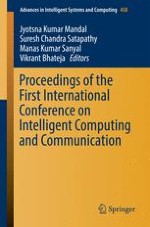The book covers a wide range of topics in Computer Science and Information Technology including swarm intelligence, artificial intelligence, evolutionary algorithms, and bio-inspired algorithms. It is a collection of papers presented at the First International Conference on Intelligent Computing and Communication (ICIC2) 2016. The prime areas of the conference are Intelligent Computing, Intelligent Communication, Bio-informatics, Geo-informatics, Algorithm, Graphics and Image Processing, Graph Labeling, Web Security, Privacy and e-Commerce, Computational Geometry, Service Orient Architecture, and Data Engineering.
